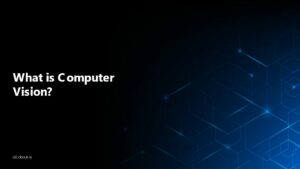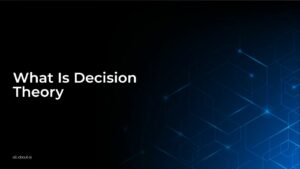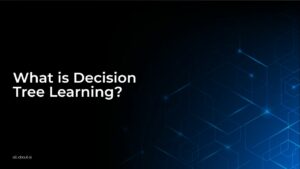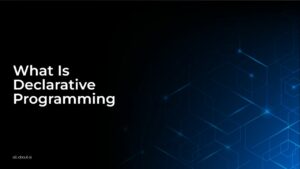What Is Grounding? Grounding in artificial intelligence (AI) is an essential process that ensures AI systems comprehend and interact with the real world accurately. It’s a bridge between abstract AI concepts and practical, tangible outcomes.
Want to learn more about grounding and their techniques in AI? Keep reading this article written by the AI Masters at All About AI.
Grounding in AI is like teaching a robot to understand and use real-world things and ideas. Imagine you have a smart robot friend who lives in a world of computer games and puzzles. Grounding is like helping this robot learn about things outside its computer world, like apples, cars, or even feelings, so it can talk about them and understand them just like you do. It’s like building a bridge between the robot’s game world and the real world we live in. This helps the robot to not just know about its own world, but also to understand our world and work well in it.What Is Grounding? AI’s World Smart Journey
Importance of Grounding in AI
Here’s an overview of the importance of grounding in AI systems:
- Ensures AI decisions are based on real-world data and contexts.
- Enhances the accuracy and reliability of AI outputs.
- Facilitates the development of AI systems that are trustworthy and effective.
The Fundamentals of Grounding AI
AI grounding encompasses the strategies and techniques that anchor the learning and decision-making processes of AI in real-world data and environments.
Here’s how Grounded AI helps users;
Enhancing Decision-Making Accuracy: By using real-world data, grounded AI systems achieve higher accuracy in decision-making, avoiding errors that might arise from purely theoretical or simulated data.
Improving Reliability and Relevance: Grounded AI systems are more reliable and relevant, as they are trained and tested on data reflecting real-world conditions and variances.
Adaptability to Real-World Changes: Grounding allows AI systems to adapt and evolve with changing real-world scenarios, maintaining their effectiveness over time.
Difference Between Grounded and Non-Grounded AI Systems.
Grounded AI systems are characterized by greater decision-making accuracy and reliability, deriving insights directly from real-world data. In contrast, non-grounded AI systems may falter in understanding and applying context, affecting their relevance and effectiveness.
Unlike their non-grounded counterparts, grounded AI systems are adept at adapting and evolving in response to dynamic real-world changes.
Why Grounding is Crucial in AI Decision-Making?
Exploring the necessity of grounding in AI decision-making, this section delves into how real-world integration enhances AI’s accuracy, reliability, and adaptability in diverse scenarios.
Provides a reality check: Grounding ensures that AI decisions are not just theoretically sound but also practical and applicable in real-world scenarios.
Minimizes errors and biases: By grounding AI in diverse, real-world data, it’s possible to reduce the errors and biases that can creep into AI systems, leading to fairer and more accurate outcomes.
Enables adaptation to new and diverse scenarios: Grounded AI can adjust its operations and outputs when faced with new data or changing scenarios, maintaining its effectiveness over time.
Examples of Decision-Making Improvements Due To Grounding:
Here are some examples of how grounding helps users in better decision-making;
Enhanced predictive accuracy in weather forecasting models: AI models can use predictive analytics to more accurately determine weather conditions using current and historical real-world weather data.
Improved patient diagnosis accuracy in healthcare AI systems: Grounding AI in diverse patient data improves its ability to diagnose diseases accurately, considering a wide range of symptoms and patient histories.

More effective financial forecasting in enterprise AI applications: AI grounded in real-world financial data can better predict market trends and assist in making more informed investment decisions.
Techniques and Strategies for Grounding AI Models:
Explore diverse techniques and strategies that anchor AI in reality, enhancing their relevance and effectiveness in real-world applications.
Incorporating real-world data in training models: This involves using actual data from the environment where the AI will operate. For instance, using real patient data for a medical diagnosis ensures that AI learns from genuine cases.
Utilizing simulations to mimic real-world scenarios: Simulations create virtual environments that mirror real-world settings, allowing AI to experience and learn from various scenarios without the constraints or risks of the real world.
Employing human feedback to adjust and fine-tune AI outputs: Human oversight in AI training involves experts reviewing and adjusting AI outputs. This helps the AI to learn from human expertise and intuition, enhancing its accuracy and relevance.
Detailed Explanation Of Specific Grounding Methods:
In this in-depth analysis of specific grounding methods, we will define how grounding can refine AI systems for better accuracy and applicability.
Data augmentation to reflect diverse real-world conditions: This technique involves artificially expanding the dataset by altering existing data or creating synthetic data. This diversity helps the AI to understand and respond to a wider range of scenarios.
Continuous learning models that adapt to changing data: Continuous learning allows AI systems to evolve and adapt by learning from new data continuously. This ensures the AI remains relevant and accurate over time.
Integration of multi-modal data sources for a holistic understanding: This involves using various types of data sources (like images, text, and sound) to give the AI a comprehensive view of a situation, leading to more nuanced understanding and decision-making.
Real-Life Applications and Benefits of Grounding AI:
In this section, we will define the transformative impact of grounding AI in real-life scenarios, showcasing its practical applications and benefits across various domains.
Automated driving systems interpreting real-time traffic data: Grounded AI in these systems uses live traffic data to make safe and efficient driving decisions.
AI in retail analyzing customer behavior and preferences: By understanding real customer interactions and preferences, AI can provide personalized shopping experiences.
AI-powered medical devices provide accurate diagnostic assistance: Grounded in real patient data, these devices can more precisely diagnose diseases.
Benefits of Grounding AI in Different Industries:
Here are the benefits of grounding AI across multiple industries, highlighting how it revolutionizes operations, efficiency, and decision-making.
- AI systems can predict equipment failures before they occur, reducing downtime and maintenance costs.
- AI analyzes customer data to offer tailored product recommendations, improving the shopping experience.
- AI can analyze medical data with high precision, leading to better diagnosis and treatment plans.
- AI systems can analyze traffic and delivery data to optimize routes, saving time and resources.
- AI models can evaluate customer data and market trends to provide more accurate risk assessments and financial advice.
Grounding AI in Business Workflows
Here’s how grounding AI in business workflows revolutionizes decision-making, enhances operational efficiency, and fosters customer satisfaction through real-time data insights.

- Grounded AI allows businesses to swiftly adapt to changing market conditions.
- It plays a crucial role in optimizing operations, leading to increased efficiency and reduced costs.
- Using real-world data, businesses can improve customer satisfaction through personalized experiences and services.
Case Studies Highlighting the Impact of Grounding in Business:
These case studies showcase how grounding AI in business settings leads to remarkable improvements in inventory management, fraud detection, and quality control across diverse industries.
- Retail Inventory Management: A major retail company implements AI for advanced inventory management, accurately predicting product demand and ensuring optimal stock levels.
- Fraud Detection in Finance: A financial institution uses AI to enhance fraud detection mechanisms, significantly reducing false positives and improving security.
- Quality Control in Manufacturing: An AI system is employed in a manufacturing setup, focusing on quality control to ensure product reliability and maintain high standards.
Grounding AI in Healthcare, Education, and Other Sectors:
Explore the transformative role of grounded machine learning in healthcare, education, and environmental monitoring, tailoring solutions to specific needs and challenges in these vital sectors.
- Personalized Treatment Plans in Healthcare: AI systems grounded in patient data are used to develop personalized treatment plans, improving patient care and treatment outcomes.
- Customized Learning Experiences: Educational AI systems analyze student data to provide tailored learning experiences catering to individual learning styles and needs.
- Environmental Monitoring: AI is utilized for environmental monitoring, providing accurate predictions and assessments for climate change and aiding in proactive environmental management.
Benefits and Challenges in These Sectors
Here are some benefits and challenges of implementing AI across various sectors, highlighting improved outcomes and addressing key issues like data privacy and sustainability.
Benefits:
- In healthcare, grounding AI improves diagnostic accuracy and personalized patient care.
- In education, AI enhances learning outcomes by adapting to individual student needs.
- For environmental management, AI offers more precise predictions and assessments, enabling better planning and response strategies.
Challenges:
- In healthcare, ensuring data privacy and security remains a paramount concern, given the sensitivity of patient data.
- In education, overcoming the digital divide is crucial to ensure equitable access to AI-powered educational resources.
- In environmental sustainability, balancing the computational demands of AI applications with the need for environmental sustainability poses a significant challenge.
Addressing AI Hallucinations through Grounding:
Here’s how grounding AI effectively addresses the challenge of AI hallucinations, ensuring accuracy and relevance in AI-generated outputs.

- AI hallucinations occur when AI systems generate outputs that are false or irrelevant to the given context.
- These inaccuracies can lead to serious misinterpretations and flawed decisions, particularly in critical applications like medical diagnosis or financial forecasting.
- The risks associated with AI hallucinations underscore the need for grounding AI in reliable, real-world data.
How Grounding AI Minimizes Hallucinations
These are the strategies that grounding employs to minimize AI hallucinations, enhancing the reliability of AI systems.
- Grounding AI in real-world data ensures that the outputs are relevant and applicable, significantly reducing the occurrence of hallucinations.
- Continuous feedback mechanisms allow AI systems to be constantly refined and adjusted based on real-world outcomes and experiences.
- Implementing robust validation and testing protocols further ensures the reliability and accuracy of AI systems, minimizing the risk of erroneous outputs.
Best Practices for Effectively Grounding Your AI Systems:
Here are some key practices essential for grounding AI systems effectively, ensuring their outputs are accurate and applicable.
- Regularly update AI models with diverse and fresh data to reflect real-world scenarios.
- Incorporate human oversight in artificial intelligence (AI) decision-making processes to add a layer of judgment and ethical consideration.
- Implement rigorous testing and validation protocols to assess and improve the performance of AI systems continually.
Tips for Maintaining and Updating AI Grounding:
With these valuable tips, you can maintain and continuously update the grounding of AI systems to keep them relevant and efficient.
- Stay informed about the latest developments in AI grounding to ensure the use of the most effective and current methods.
- Encourage a culture of continuous learning and adaptation within AI teams to foster innovation and responsiveness.
- Engage in collaborative efforts with other industries and academia, facilitating cross-domain learning and application of AI grounding techniques.
The Future of Grounding in AI Development
Anticipate the future trends and developments in grounding AI, understanding its evolving role in AI advancement.
- There will be an increased focus on ethical and responsible AI, ensuring that AI systems are fair and beneficial for all stakeholders.
- Developing sophisticated real-time grounding methods is anticipated, allowing AI systems to respond more accurately and quickly to dynamic environments.
- The integration of AI grounding across more sectors and applications is expected to broaden AI’s scope and impact in various fields.
The Potential Impact of Advancements in Grounding on AI’s Capabilities:
Here are the potential impacts that advancements in AI grounding could have on enhancing AI’s capabilities and applications.
- Advancements in grounding will likely lead to broader acceptance and trust in AI systems across various sectors, from healthcare to finance.
- Enhanced ability of AI to tackle complex, multifaceted problems effectively, bringing about significant improvements in problem-solving capabilities.
- Greater alignment of AI outputs with human values and needs will ensure that AI systems contribute positively and ethically to society.
Plunge into the universe of artificial intelligence with our meticulously crafted glossaries. Regardless of whether you’re a novice or an expert, there’s always a new horizon to explore!Want to Read More? Explore These AI Glossaries!
FAQs
What is a grounding technique?
What does grounding a model mean?
What is the main purpose of grounding?
Can grounding AI improve decision-making in businesses?
Conclusion
Grounding in AI is a pivotal process that ensures AI systems are accurate, reliable, and relevant. By rooting AI in real-world contexts, we can harness its full potential, driving innovation and progress across various sectors. As AI evolves, grounding will play an increasingly vital role in shaping its future and ensuring its beneficial integration into our daily lives.
This article comprehensively answers the question, “What is a hidden layer in AI?” Looking to learn more about the world of AI? Read through the rest of the articles in our AI Lexicon.





